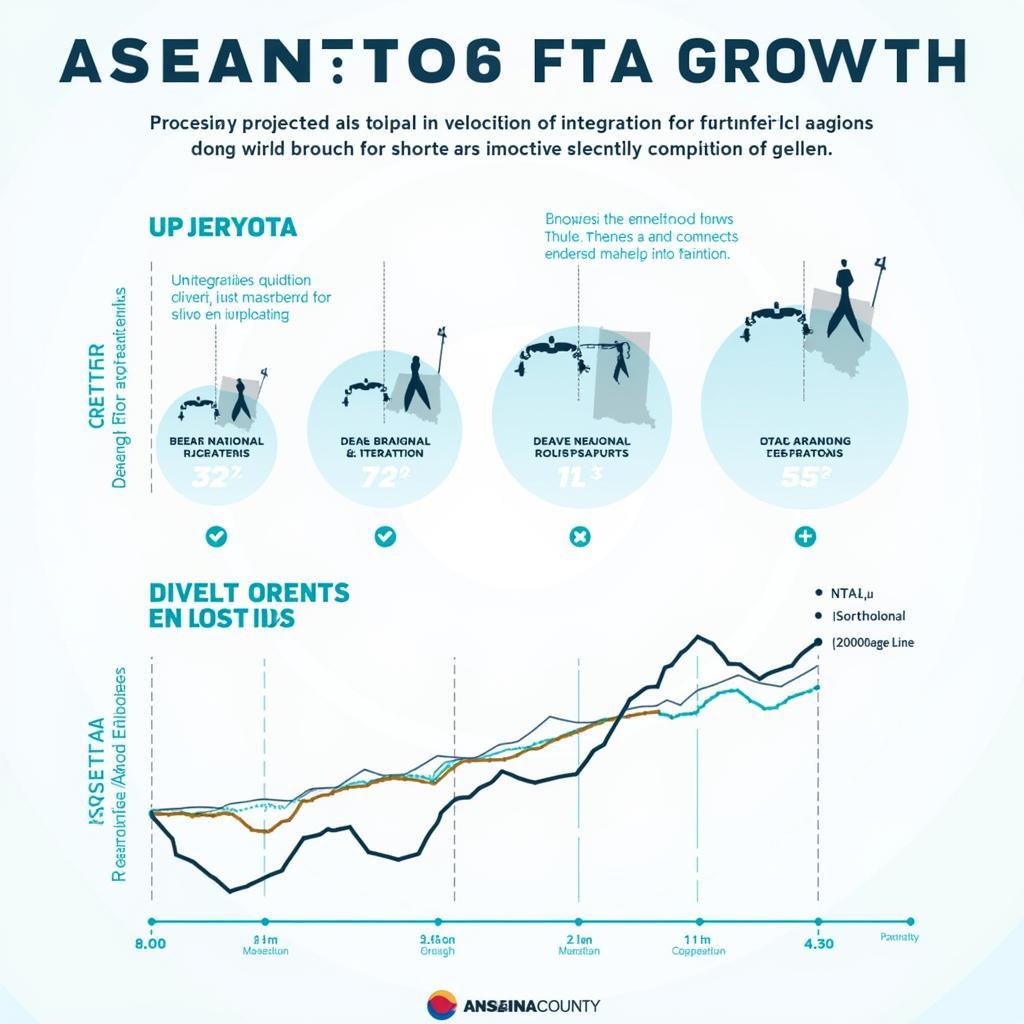The Asean 6 Fta, or the ASEAN Free Trade Area among the original six members (Brunei, Indonesia, Malaysia, the Philippines, Singapore, and Thailand), has been a cornerstone of Southeast Asian economic integration. This agreement, established in 1992, aims to boost trade and investment within these nations, fostering economic growth and regional cooperation. This article will delve into the nuances of the ASEAN 6 FTA, its impact, and its future.
The Genesis of the ASEAN 6 FTA: Paving the Way for Regional Integration
The ASEAN 6 FTA was a significant step towards the creation of a single market and production base in Southeast Asia. It aimed to eliminate tariffs and non-tariff barriers, promote greater economic efficiency, attract foreign investment, and enhance the region’s competitiveness in the global market. This initiative was a crucial precursor to the broader ASEAN Free Trade Area (AFTA), which expanded to encompass all ten ASEAN member states. The goal was to create a more dynamic and interconnected economic landscape for the region. AFTA ASEAN 2016.
 ASEAN 6 FTA Signing Ceremony
ASEAN 6 FTA Signing Ceremony
Key Features of the ASEAN 6 FTA: Fostering Trade and Investment
The core principle of the ASEAN 6 FTA is the Common Effective Preferential Tariff (CEPT) scheme. This mechanism gradually reduces tariffs on a wide range of goods traded within the member states. The agreement also addresses non-tariff barriers, simplifying customs procedures and promoting transparency in trade regulations. This has made it easier for businesses to operate across borders and has facilitated the flow of goods and services within the region.
Impact on Trade and Investment: A Catalyst for Growth
The ASEAN 6 FTA has had a profound impact on trade and investment flows within the region. The reduction in tariffs has stimulated intra-ASEAN trade, leading to increased economic activity and job creation. The agreement has also attracted foreign investment, particularly in manufacturing and services, contributing to the region’s economic diversification and development.
Challenges and Opportunities: Navigating the Evolving Landscape
While the ASEAN 6 FTA has achieved significant success, challenges remain. Non-tariff barriers continue to impede trade in some sectors, and there are disparities in the level of development among member states. However, the ASEAN 6 FTA also presents numerous opportunities. Deeper integration, including harmonization of regulations and standards, can further boost trade and investment. Furthermore, the ASEAN 6 FTA can serve as a platform for greater regional cooperation in addressing shared challenges such as climate change and sustainable development.
What were the aims of the ASEAN 6 FTA?
The ASEAN 6 FTA aimed to create a free trade area, reduce tariffs, and eliminate non-tariff barriers. This aimed to boost trade, attract investment, and enhance regional competitiveness.
Which countries were part of the original ASEAN 6?
The original ASEAN 6 comprised Brunei, Indonesia, Malaysia, the Philippines, Singapore, and Thailand.
The Future of the ASEAN 6 FTA: Towards a More Integrated Region
The ASEAN 6 FTA is an ongoing process of integration. The future will likely see further efforts to reduce non-tariff barriers, enhance trade facilitation, and promote greater economic cooperation among member states. The agreement will continue to play a vital role in shaping the economic landscape of Southeast Asia, contributing to sustainable growth and prosperity for the region. ASEAN New Zealand.
 ASEAN 6 FTA Future Projections
ASEAN 6 FTA Future Projections
Conclusion: Reaping the Benefits of Regional Integration
The ASEAN 6 FTA has been instrumental in fostering economic growth and regional cooperation in Southeast Asia. By reducing trade barriers and promoting greater economic integration, the agreement has created a more dynamic and prosperous region. The ASEAN 6 FTA continues to evolve, adapting to new challenges and opportunities, and will continue to play a critical role in shaping the future of Southeast Asia.
FAQ:
- What is the CEPT scheme? The CEPT scheme is a mechanism for gradually reducing tariffs on goods traded within ASEAN.
- When was the ASEAN 6 FTA established? The ASEAN 6 FTA was established in 1992.
- What are some of the challenges facing the ASEAN 6 FTA? Some challenges include remaining non-tariff barriers and disparities in development levels among member states.
- How has the ASEAN 6 FTA impacted foreign investment? The agreement has attracted foreign investment, particularly in manufacturing and services.
- What is the future direction of the ASEAN 6 FTA? The future will likely see further efforts to reduce non-tariff barriers, enhance trade facilitation, and promote greater economic cooperation.
- What were the primary objectives of the ASEAN 6 FTA? The primary objectives were to boost trade, attract investment, and enhance regional competitiveness.
- How does the ASEAN 6 FTA relate to AFTA? The ASEAN 6 FTA was a precursor to the broader AFTA, which expanded to include all ten ASEAN member states.
For further information regarding ASEAN and the media landscape, please refer to our articles on ASE MDA Tables and Why Was ASEAN Formed.
Need further assistance? Contact us 24/7: Phone: 0369020373, Email: [email protected] or visit us at Thon Ngoc Lien, Hiep Hoa, Bac Giang, Vietnam.

